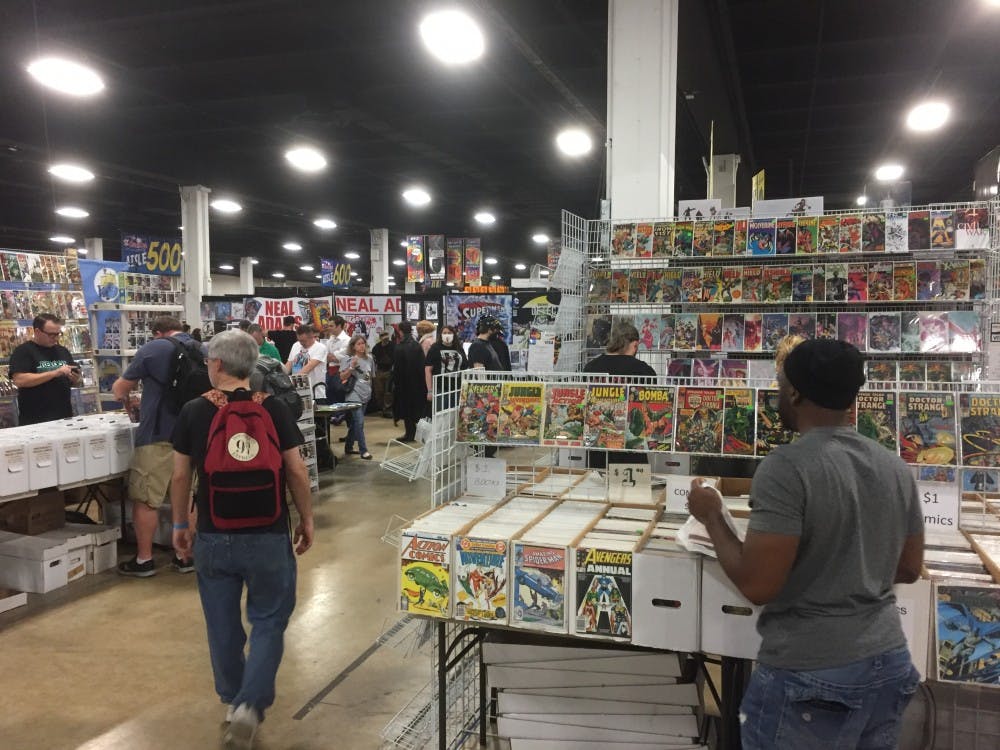Pop-culture fandom has undoubtedly grown in the last couple decades, obvious by the attendance and prevalence of conventions, or cons, around the globe alone. In the late '90s, Comic-Con International, usually known as San Diego Comic Con, was pulling in up to 40,000 fans a year. Suddenly, in the summer of 2002, the attendance jumped 10,000 people from 53,000 the year before. A few months earlier, Sam Raimi’s first Spider-Man film released at the box office and became the first film to break $100 million on opening weekend. The fandom was speaking loudly. They were eager to start a renaissance of the superhero genre after a relatively stale decade. It was up to cons and publishers to take notice.
Two years later, San Diego Comic-Con expanded into Hall H of the convention center and thereby occupied the entire exhibit area. They were ready, and the fans answered. Over 25,000 more fans came in 2004 than 2003, bringing the number to about 95,000 people. Since then, SDCC has steadily been inclining in attendance to the point of establishing an almost 130,000 attendance cap because of overcrowding issues. Ironically, this isn’t even the most popular convention.
Partly due to location and little space constraint, New York Comic Con holds the record for attendance at 180,000 tickets sold this past October. However, the thing to take note of is what the fans are coming for. At that same event, pop culture analyst Rob Salkwoitz ran a poll that suggested a measly 6 percent of those in attendance were there for comic books — a staggering figure considering the history of the convention. Although that figure was challenged by some, the fact remains: Comic-Con is no longer focused on comics. As a personal testimony, I can say that SDCC is clearly much more interested on the film and TV portion of the industry during my experience a couple years ago. A few “Silver Age” comic retailers are present, but it is hard to find non-collector issues.
This brings us to last weekend’s SC Comicon in Greenville. No hard figures for last weekend are available, but in 2014, the con’s first year, there was an attendance of 6,500. Considering that it was the first year, that is an encouraging number, and one that is sure to grow. The unique thing about SC Comicon, and even Charlotte’s popular HeroesCon and Columbia's own Soda City Comic Con, is that it is small enough to maintain a focus on comics culture while still attracting big names from the industry. Comic legends Neal Adams, Denny O’Neil, Mike Zeck and Mike Grell joined with more contemporary talent like Mark Waid, Frank Cho, Van Jensen, and Columbia’s Sanford Greene for this year’s convention.
“Hal Jordan and the Green Lantern Corps” writer Robert Venditti gave insight as to why he believes SC Comic Con and other, smaller conventions are special.
“I do go to a lot of conventions, but I don’t normally set up at a table. I’ll usually fly and go to panels and have meetings … this is more of a local show for me so I like to be able to come here, see all of the other writers that are in my community … it’s a chance for us all to hang out," Venditti said.
Smaller comic conventions like this have more to offer for legitimate fans of the medium but still accommodate the entertainment side of things. Shannon Purser, who plays Barb Holland from popular Netflix original “Stranger Things,” had an entire booth and line devoted to her. Comics culture has broadened to include many different things. While there are several places to experience crowded hallways, lines for panels, and a chance at meeting your favorite actor, conventions like SC Comicon allow for more personal connections with creators along with deals that will let you get 30 issues for $10. It’s all up to personal preference, but if you haven’t had a chance to go to a local convention, I highly recommend trying it out.

